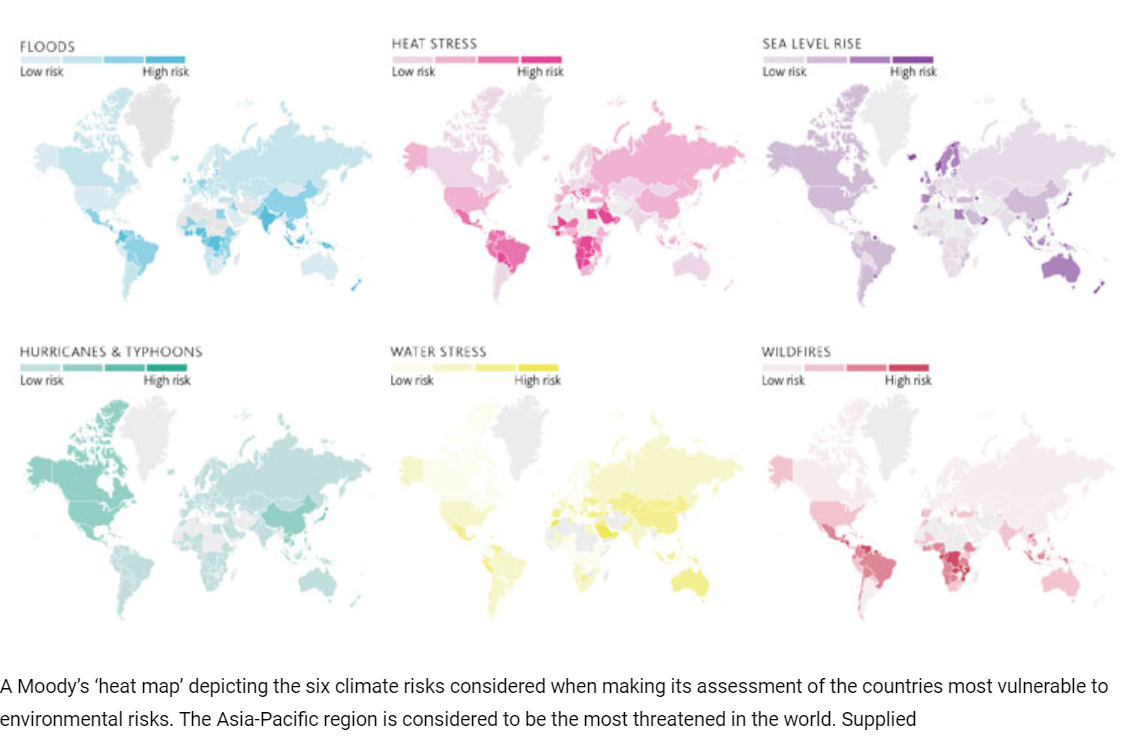Cambodia – Moody’s: Kingdom’s rating at risk from climate change
Moody’s Investors Service is warning Cambodia’s credit rating may be in jeopardy because the Kingdom is significantly more vulnerable to climate-based economic risks than other countries.
“EMs [emerging markets] in [Asia-Pacific] stand out for their exposure to flood risk, which is highest in Cambodia, the Philippines and Thailand,” the rating agency said.
Of the three countries listed, the Kingdom already has the lowest credit rating. Its B2 stable rating falls outside the “prime” category and is considered speculative and high-risk. Moody’s holds a “highly negative” outlook for Cambodia’s physical climate risk.
A total of 41 EMs were rated “highly negative”, nine were “very highly negative”. No advanced economies (AMs) were assigned ratings above “moderately negative”.
“Over time, repeated climate-related natural disasters can weigh on investment, productivity growth and economic strength, which can weaken a sovereign’s credit profile,” said Steffen Dyck, Moody’s vice-president and senior credit officer.
“There is also a large gap between financing needs for climate-adaption measures and low-cost funding sources. This threatens the credit profiles of sovereigns which are highly exposed to physical climate risk, especially those with already low fiscal strength,” he added.
Cambodia’s Climate Change Strategic Plan (CCCSP) in 2013 reported that temperatures are likely to rise in coming years between 0.13 and 0.36 degrees Celsius.
The CCCSP said that rice yields are likely to decline by 10 percent for every 1 degree Celsius rise in temperatures, while rainfall patterns will be more sporadic, with average rainfalls expected to decrease, threatening the production of coffee and rubber crops.
“Sea level rise could reach 0.56 metres by 2090 under high climate change scenarios, inundating 25,000 hectares and creating increased vulnerability to storms and affecting coastal towns and tourism. Coastal areas and central plains are expected to become more vulnerable to flooding, affecting agriculture, fisheries, tourism and other services,” the CCCSP said.
Moody’s said that economies with a high dependence on climate reliant industries, including agriculture and tourism, are “more sensitive to adverse climate shocks and trends”.
“High economic dependence on climate-sensitive agriculture and tourism industries magnifies sovereign exposure to climate risk while high-quality transport infrastructure and healthcare systems tend to diminish it.”
Noting that Singapore is more exposed to rising sea levels with the highest proportion of the capital and its population exposed to the risk, Moody’s said that the country is “well-positioned to continue to adopt climate strategies”.
Last year, Singapore announced the creation of a Coastal and Flood Protection fund with an investment of $3.75 billion – 1 percent of its gross domestic product – and intends to invest a further $750 million annually.
Such measures are difficult for Cambodia, given its limited financial capacity. In 2017, the government is said to have spent $225 million on combating climate change.
The Ministry of Water Resources and Meteorology reportedly received 37 percent of these funds.
Source: https://www.khmertimeskh.com/50853007/moodys-kingdoms-rating-at-risk-from-climate-change/


 English
English




